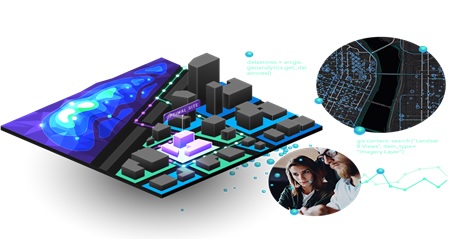Electric Field Modulation - The Future of Data Transmission
In today's interconnected world, our reliance on wireless technology has skyrocketed, prompting an incessant demand for efficient data transmission methods. Enter the groundbreaking research by professors Robert Prance and Daniel Roggen at the University of Sussex, heralding a paradigm shift in connectivity that could potentially eclipse Bluetooth in our devices.

Figure 1. Data Transmission.
Figure 1 is an illustration of data transmission. The crux of this innovation lies in the utilization of electric waves, a stark departure from the age-old electromagnetic waves powering Bluetooth, Wi-Fi, and 5G technologies. While electromagnetic modulation served its purpose over a century ago in transmitting data over long distances, electric field modulation emerges as a beacon of efficiency for short-range data transmission.
This transformative approach offers a beacon of hope for enhancing battery life in our smartphones, wearable tech, and smart home devices. Imagine streaming music to your headphones, engaging in calls, or using fitness trackers without constantly draining your battery. Electric field modulation promises just that - a more sustainable and enduring connection.
Professor Roggen emphasizes the game-changing potential: "We no longer need to rely on battery-hungry electromagnetic modulation. We can improve the battery life of wearable technology and home assistants, for example, by using electric field modulation instead of Bluetooth. This solution will not only make our lives much more efficient, but it also opens novel opportunities to interact with devices in smart homes."
The allure doesn't stop at efficiency. This innovation sparks imagination for futuristic applications. Picture a bracelet facilitating the exchange of contact information with a simple handshake or effortlessly unlocking doors with a mere touch. The possibilities seem limitless.
What's more, this breakthrough isn't just groundbreaking but also cost-effective. The potential for mass production and integration into everyday devices is within reach. With the ability to miniaturize this solution into a single chip at minimal cost, widespread adoption in the near future appears promising.
The University of Sussex researchers are on the cusp of transforming the way we connect with our devices. Their pursuit of industrial partnerships aims to expedite the miniaturization process, paving the way for this revolutionary technology to be seamlessly embedded in our daily lives.
Stay tuned for a future where connectivity is not just efficient but also sustainable, all thanks to the ingenuity of electric field modulation.
Source: University of Sussex
Cite this article:
Hana M (2023), Electric Field Modulation - The Future of Data Transmission, AnaTechMaz, pp. 90















